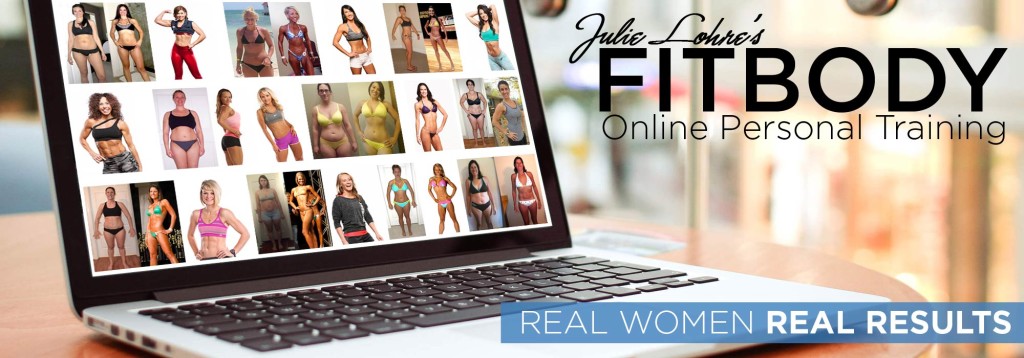Front Squat versus Back Squat
Both front squats and back squats are fantastic exercises for strengthening the whole lower body. Quads, hamstrings and glutes are all involved. But determining which is best for you – Front Squat versus Back Squat – can be a little complicated. All squats will help us get stronger, jump higher and run faster while shaping your legs and butt. But it is important to understand these squats better to determine which you should include in your leg day workout. Let’s evaluate the relative risks and benefits of the Front Squat versus Back Squat and take into account the pro’s and cons of each squat.
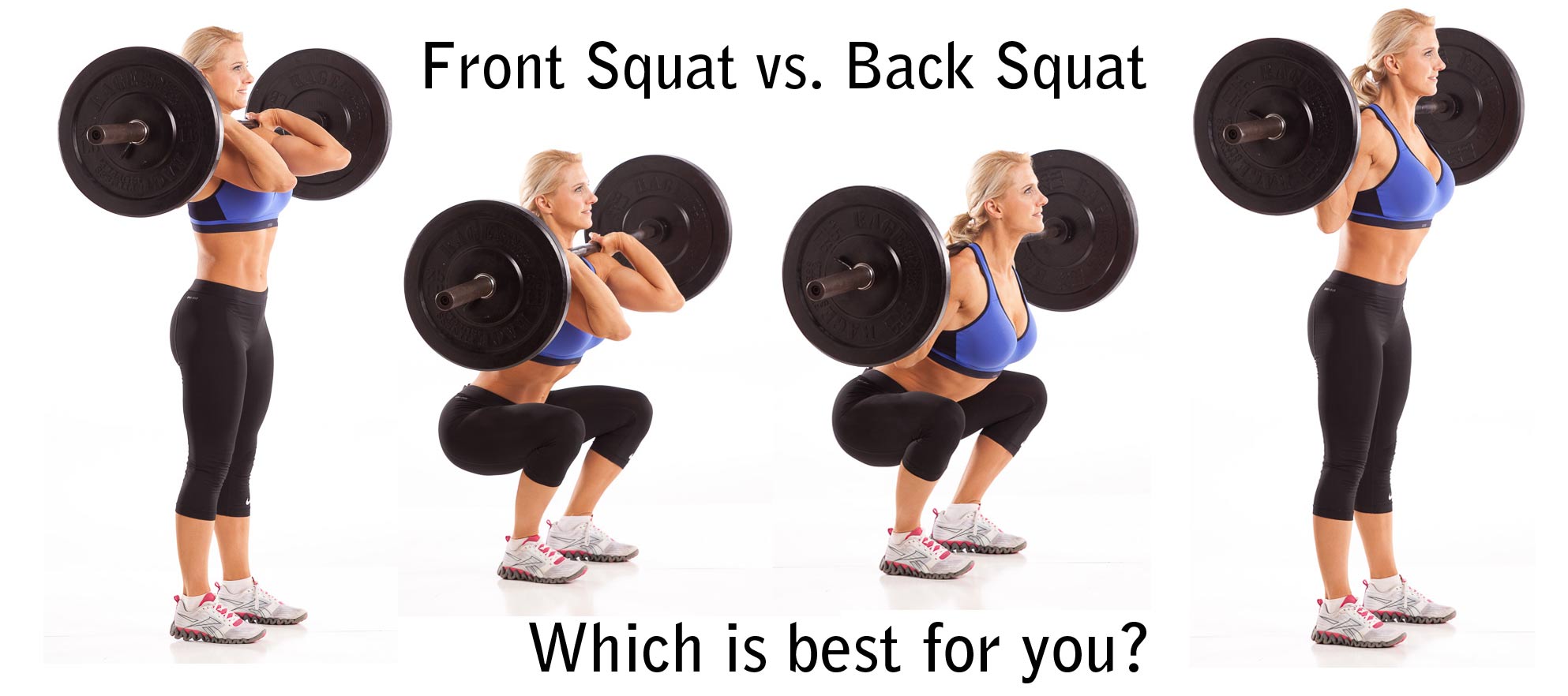
Front Squat versus Back Squat
alert-infoMobility is the #1 Consideration when choosing the Front Squat versus Back Squat.
Front Squats requires significantly more mobility than Back Squats. You need excellent thoracic spine (upper back) mobility to keep your chest up, outstanding wrist flexibility and shoulder mobility to rack the bar, superb hip and groin mobility to front squat low with your knees in line with your toes, and fantastic ankle mobility to keep your lower back from rounding.
Very few women move well enough to execute a textbook Front Squat from the get-go. The positive here is that it forces you to improve your flexibility before going super heavy with a front squat. Limited mobility does not mean that you should never perform a front squat though. You should limit the weight you use until your flexibility improves.
Check out my three tips for improving your squat technique.
Back Squats require less mobility in the shoulders, hips and ankles, so you can jump into them sooner. That is good for getting stronger, but you still need to address your mobility issues.
Muscles Trained: Front Squat versus Back Squat
Front Squats and Back Squats train different muscles in different ways because the placement of the bar causes slight changes in motion of the spine, hips, knees and ankles.
Front Squats zone in on the quads and upper back, while Back Squats focus more on the hips, glutes and lower back. Both lifts recruit all these muscles together, but the emphasis shifts from one lift to the other.
That said, for a well rounded, athletic body that is strong and performs well, you want a balance of development. Don’t just focus on one muscle group while neglecting others.
Better Performance: Front Squat versus Back Squat
Looking to increase your overall athletic performance? Both front squats and back squats have pros and cons when we look at improving athletic performance.
Hip Extension: Squats build tremendous strength in the muscles that extend the hip, specifically the glutes and hamstrings. These muscles provide the horsepower for sprinting and jumping. Back Squats load up the hips more than Front Squats, because you can “sit back” into them more. So if you want more powerful hips, get the bar on your back. Winner: Back Squats
Jump Power: Studies show that improving squat strength is closely linked with improvements in vertical jump height. That’s because if you can extend your hips with more force, you can propel yourself higher into the air. Studies show no clear difference in jump improvements between Back Squats and Front Squats. Winner: Tie
Sprint Speed: Studies also show that squatting more weight can lead to improvements in sprinting speed. Simply, the more force you can apply to the ground, the faster you can move. But just like jumping, both lifts work. Winner: Tie
Overall Strength: Back Squats let you lift more weight than Front Squats, period. Front Squats are limited by how much weight you can hold on the front of your shoulders. Back Squats let you support much heavier loads across your upper back. There’s a reason why the world record in the Back Squat is over 1,000 pounds; it’s better suited for massive weights. And with more weight comes greater potential for strength gains. Winner: Back Squats
Shoulder Health: Many athletes deal with cranky shoulders that can get irritated by Back Squats. Luckily, Front Squats avoid that pain by placing the shoulders and elbows in a safer position. If you struggle with shoulder issues, Front Squat with a clean grip or cross grip for greater safety. Winner: Front Squats
Knee Health: Controlling the movements of the knee is crucial for reducing injuries such as ACL and meniscus tears. Squats can help limit the likelihood of knee injuries by strengthening the muscles that stabilize the knee, specifically the vastus medialis oblique (i.e., your inner quad). Front Squats hit this muscle a bit harder than Back Squats, plus they teach you how to push your knees “out” to avoid the dreaded knock-kneed valgus collapse, which mimics the exact mechanism for an ACL tear. That said, sometimes the deep knee flexion of Front Squats can bug an athlete’s knee, and Back Squats (particularly Box Squats or squatting with a wider stance) can avoid this nuisance by placing more load on the hips than the knees. Winner: Tie
Cleans and Snatches: The most glaring difference between Front Squats and Back Squats is the carryover to Olympic lifts, the Clean and the Snatch. Back Squats let you lift more weight, but the execution of the Front Squat closely mimics the motion of rising from the bottom position after catching a Clean or Snatch. Olympic lifts are widely respected for their ability to improve explosiveness, so if you want to get better at the Clean and Snatch, Front Squats work better. Winner: Front Squats
Best of Both Worlds Front Squat versus Back Squat
We really can’t determine a winner when looking at back squats versus front squats. If you can do each movement safely, there is a place for both back squats and front squats in most women’s weight training programs.
Front Squat
alert-info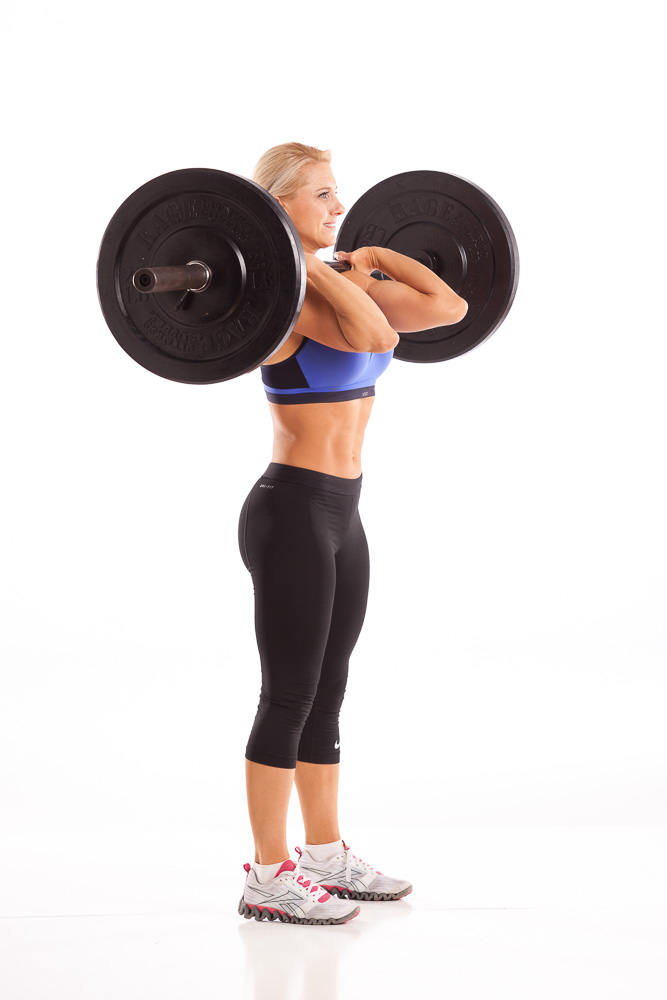
Front Squat Starting Position
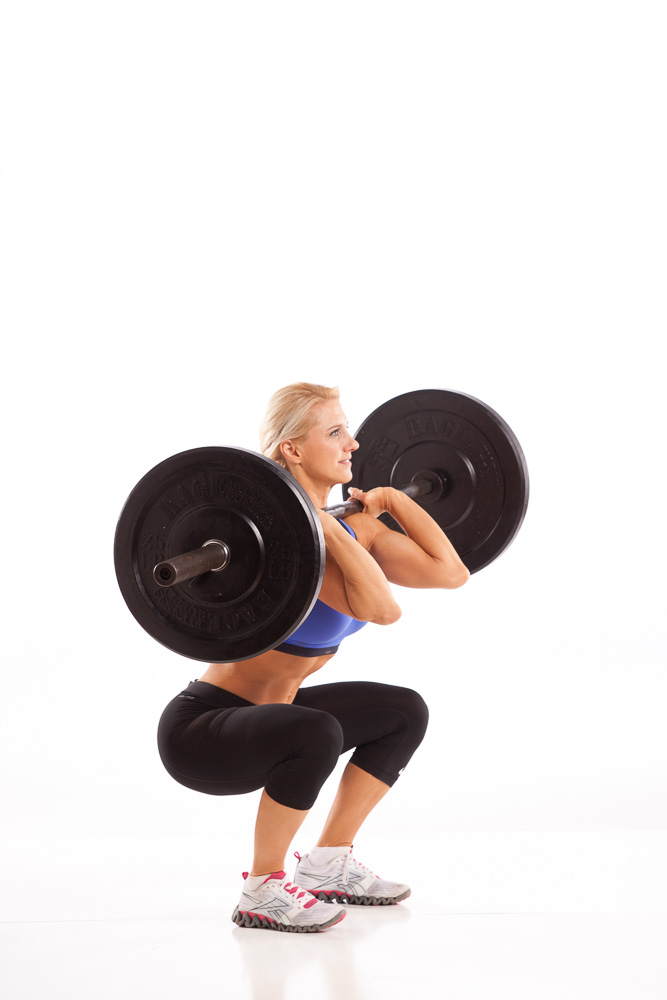
Front Squat Full Depth
Back Squat
alert-info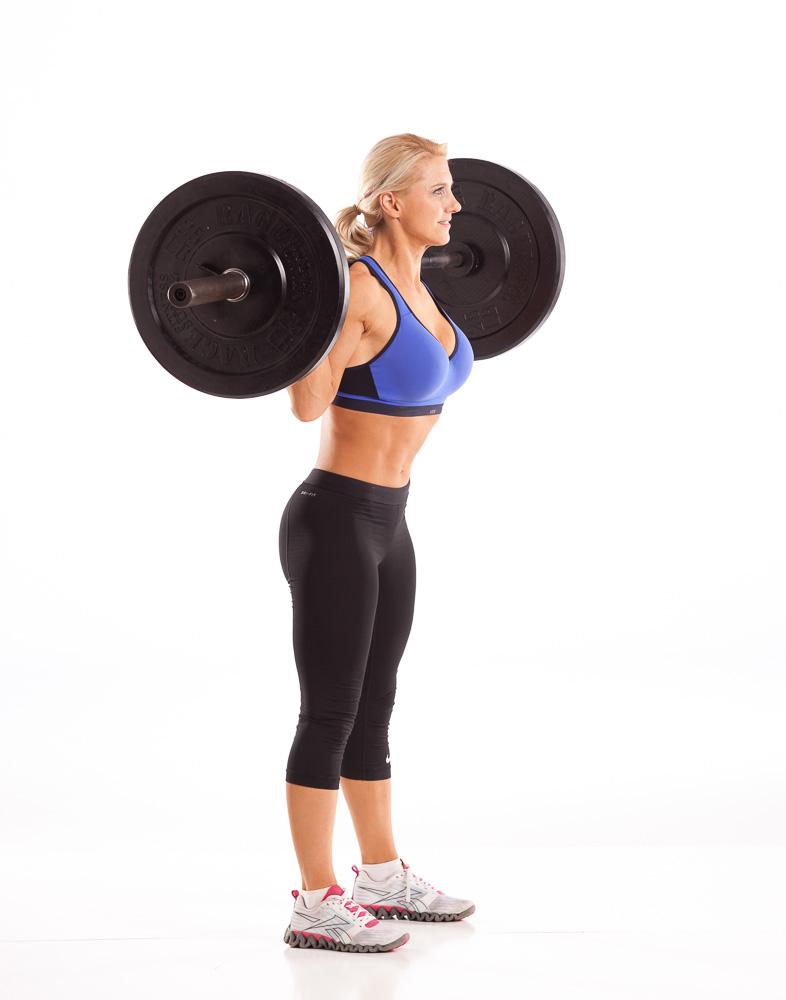
Back Squat Starting Position
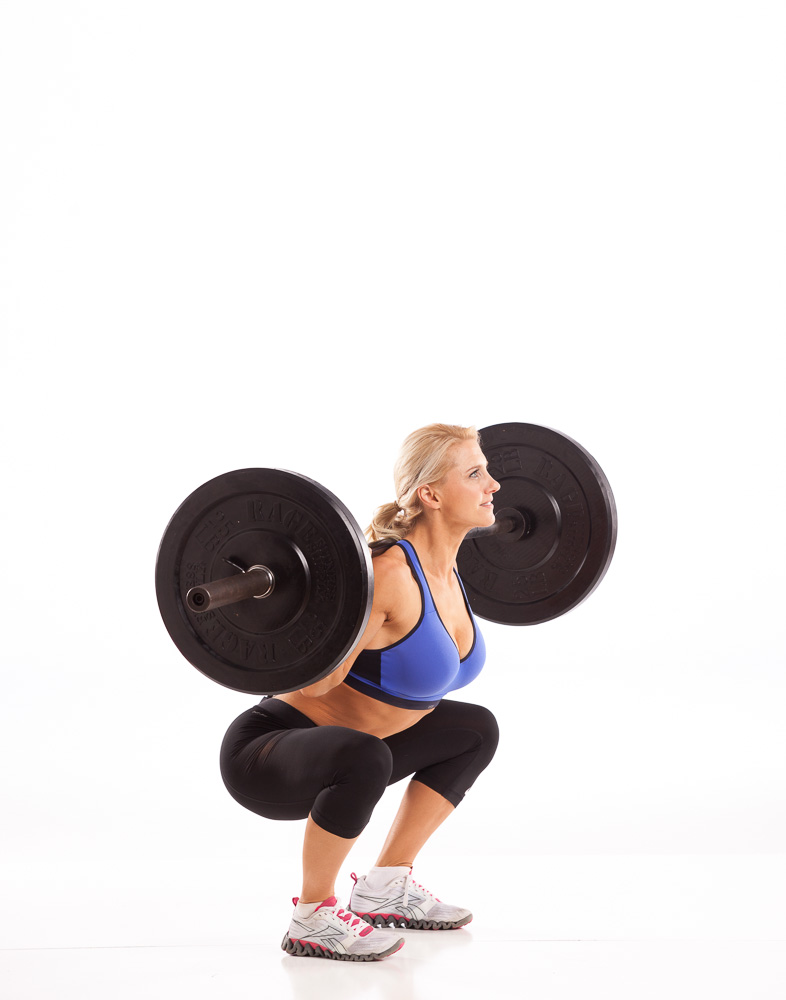
Back Squat Full Depth
No matter whether you are a fan of front squats or back squats you want to get fitter and healthier right?
Well, in 2 training sessions, the average woman taking part in Julie Lohre’s Online Personal Training program DOUBLES the # of strict pushups she can do, decreases 1 mile run times by 2 mins, 30 seconds and increases their sit and reach flexibility by 3 inches.


